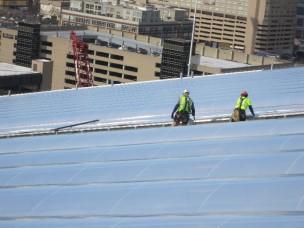 ETFE, the fluorocarbon-based polymer ethylene tetrafluoroethylene, is quickly gaining popularity in North America and being used on some of the continent’s most prominent projects. ETFE was developed for architectural purposes in the 1970s, and since that time, mainstream use of ETFE in construction projects has been largely limited to Europe.
ETFE, the fluorocarbon-based polymer ethylene tetrafluoroethylene, is quickly gaining popularity in North America and being used on some of the continent’s most prominent projects. ETFE was developed for architectural purposes in the 1970s, and since that time, mainstream use of ETFE in construction projects has been largely limited to Europe.
The material has many attractive attributes that provide not only a new aesthetic quality, but also potential cost savings. Weighing in at roughly one percent of the weight of glass, significant reductions in structural costs are made possible by employing ETFE. Despite these great potential benefits, the material is not an equal substitution to glass or other roofing systems in many respects.
Through review of material characteristics, performance modeling, and multiple case studies of current ETFE installations, the authors will discuss lessons learned, limitations, as well as the benefits of the material from the perspective of building science implications.

